How to overcome
Clutter Triggers (that cause you to stumble) +
Clutter Personalities (that hold you back).
During the lockdown, Marie Kondo showed you how to neatly fold your smalls into the perfect parcel size to create an organised drawer of delight. Everything neat and tidy. But, what’s happened now – do you still take the time to fold your clothes or has the novelty worn off?
It can be a struggle to keep your home tidy and ordered because there are so many pitfalls that cause you to stumble. Here are a few you might recognise:
- Even when you tidy up, your room is still a mess the next day
This is because there’s a daily stream of clutter triggers that are continually causing a mess in your home. Every day there’s post dropping through your letterbox, recycling from all of the packaging, laundry from the constant stream of washing clothes and the mess created by kids or pets.
A client told me how her partner dumped his coat on the dining chair every day when he returned from work. It really annoyed her because they had a coat cupboard by the front door… but he came in the back door!
With coats and shoes, the storage needs to be close to the door you enter, so I put up coat hooks in the utility room, that was next to the back door, and this solved the problem. It’s a simple solution but one that made a huge impact.
- When you’re ill or busy, your space becomes a bombsite
There will be days when you’re feeling ill, lethargic or overwhelmed, and you don’t have the energy, the motivation or the time to tidy up.
One of my clients was a highly intelligent professor whose office was strewn with paperwork and books. She liked to file her papers in plastic wallets, and then pop them into drop leaf folders within a filing cabinet, but this wasn’t happening because she was too busy and this method of filing was cumbersome and took far too long. Her office had become disorganised.
I changed her filing system to lever arch folders that were still organised but far quicker to file paperwork and find her research papers. After a sort out of the books, her favourite ones were styled on shelves, which helped her work more effectively and sell the property.
- There’s stuff lying about everywhere and you don’t have the space to put your things away properly
As you mature, particularly for children, you need the right type of storage solution to suit your physicality and save you time.
I redesigned a bedroom for a teenage girl who was struggling to tidy her room and didn’t want her friends over to see the mess. Her original storage was the baby style boxes for dumping toys, but now that she was at secondary school, she needed shelves for her school books and space to display photos of her friends.
With a change of storage solutions, a new desk (that doubled as a dressing table), an organised wardrobe and a bright new colour scheme, she’s far happier and enjoys having her friends over to stay.
- Tidying up can be boring
Whenever I go on holiday I’m so excited to pack my case, but when I return it’s a drag to unpack a case full of dirty washing. And then there’s my husband’s washing and the kids as well. My holiday is over so it’s tedious and boring knowing that there’s a pile of stuff to wash, dry and sort out. I know it’s an energy drain but I just split it into colours and crack the washing machine open. But, what happens when you let it pile up and up and up?
My most overwhelming, decluttering job was with a mother and teenage daughter who had so much dirty washing in their house that you physically had to step over it once you’d squeezed through the front door. The mother didn’t do any washing because she couldn’t hang it outside in her garden (there was too mush stuff in front of the back door so it was never opened) and there was no room to hang the washing out in the house because of the mountain of black bin liners filled with clothes.
It was very sad to experience their state of depression. In these instances, I recommend that you get together with a good friend or seek professional help to get you started and give you a plan to tackle the overbearing clutter.
Living in a messy, cluttered or disorganised home can lead to physical, mental and emotional problems.
- Physical problems
If you have too much stuff lying around then it can cause trips and falls. You need to be particularly mindful of this is you have young children, anyone who has mobility aids or struggles with balance.
With the mother and daughter living in a cluttered home, they both suffered from headaches and lethargy. This was because they couldn’t open the windows or the back door, to let in the fresh air, because there was too much stuff in the way. In your home, you should allow for a flow of energy and air circulation. Good air is particularly important if you have asthma or other respiratory problems.
- Mental problems
If you’re feeling overwhelmed with the mass of things you have or the mess you see in your home, it can often feel daunting. This brings on feelings of guilt, because you’re not able to tidy up and get straight, which can lead to you being secluded and feeling lonely as you’re ashamed and don’t want to share your space with others.
The teenage girl was 17 and never had her friends over, for a sleepover or supper at her home, because she was ashamed of the messy house. It was heart breaking to hear her say how embarrassed she felt, and she prayed every night asking god to send someone to help her and her mother get out of the mess.
- Emotional problems
As well as the physical and mental problems associated with clutter, there’s also the emotional pain of stress and anxiety. This can quickly lead to sleep problems and even severe depression.
Clutter becomes an issue when it causes you physical, mental or emotional problems. When you have an organised home, it’s a healthy home that will nurture and support you.
As well as Clutter Triggers that invade your space everyday with their mess, there are also Clutter Personalities that keep you hanging on to things.
- JUST IN CASE
This is when you store items in case they’re useful later on. You might have previously thrown things away that you later regret, you might be cost conscious and don’t want to throw it away because it might be useful at some time in the future, or it might be difficult for you to find things so you keep lots of the same things.
For my Just In Case client, she kept random things (pens, paperclip, old buttons, rubber band) in empty ice-cream tubs that were neatly stored on shelves in a cupboard. The problem was that she kept creating more and more of these containers because she didn’t know what she had and couldn’t find any of the things easily. They became more and more tubs of junk.
Instead of the ice-cream tubs, she needed clear storage boxes with a separate one for each of the various items – a box for pens and a different one for paperclips etc). Now she can easily see what’s in each box so it’s quick for her to reach for the items when needed, and she can also identify when she’s running low on things that need replacing.
She’s organised so that it’s quick and easy to see everything, whilst being comforted knowing that she’s prepared for any eventuality.
- SENTIMENTAL SAVER
When you keep things because of their emotional attachment, for example: I have my teddy bear ‘Tom’ that I bought, when I was 7 years old, from money that my grandmother gave me. I even took him to university and have cried into him many times. He’s also given my children comfort when they were young and unsettled at night. Now, I keep him in my bedroom so that I see him everyday.
When ‘there’s a place for everything and everything is in its place‘ you feel in control and organised.
But what if you can’t find a place for your things and they’re just hanging around your home? This is when the clutter can cause unsettling feelings because you see it every day but you don’t know what to do with it.
Firstly, decide whether you want the item(s) to be on display (like my teddy) or hidden away and not on show.
Sometimes you might stuff things in the loft or a cupboard because you want to keep it but don’t know how to display it. This often happens if you have a collection. One lady collected teapots whilst a guy collected model aeroplanes. They both need different solutions to display the items – the teapots were featured on slim linear shelves like soldiers waiting for a cuppa, whilst the model planes were displayed on top of wall cupboards that floated around the office.
If you want to keep your things but don’t want them to be on display, it’s worth investing in a few pretty boxes (if they’re being stored in a room) or waterproof plastic boxes with lids (if they’re being stored in the loft or a shed). You can find many boxes of various styles online, at supermarkets or at high street shops (Dunelm, The Range, Ikea, Wilko, B&Q, Homebase, Homesense, Amazon).
You can also store your things in furniture with lift up beds, drawers in beds, cupboards or ottoman. This type of storage is particularly useful if you’re short on space and you don’t have access to a loft, garage or shed.
- TREASURED MOMENTO
Sometimes you might have items that not only have an emotional connection but also have a financial value. You want to get rid of them but you don’t just want to give them away to anyone.
When my elderly gentleman was downsizing and his carpentry toolset was needing a good home. Over the years he’d made many lovely wooden pieces, with a bench for his garden and an heirloom rocking horse for his children, so he had fond memories attached to the tools. Of course, they also had a monetary value. I found a local carpenter who made an offer on the tools that the old gent accepted because he knew that they would be used with love and affection. He was now happy to move on with his life and downsize his things.
It’s not just about selling the item because it’s important to know that the memories and pleasure you had from the items will be appreciated and shared by others.
So, WHERE DO YOU START + HOW DO YOU TACKLE A DECLUTTER
- Set yourself some dedicated time to clearing out and getting sorted. Please be kind to yourself and be mindful that the first day can be very emotional as you relive those memories.
- Prepare yourself with a bottle of water (to keep you hydrated), a small bar of chocolate or a snack (to give you a pop of energy when you’re feeling low), bin liners (for clothes that are going to charity), stick on labels (for the bin bags so you can separate clothes and shoes) and a box (for other charity items, eg: vase, pictures, lamp).
- Put on your favourite music or a motivational podcast that will give you a boost of energy.
- Set your sights small. Rather than expecting to clear the whole room, just choose a cluttered corner, a drawer or a cupboard. As I mentioned, the first day can be emotional and exhausting because you’re reliving memories, so give yourself time to accept and process that emotion. On subsequent days, you should be feeling invigorated and energised so they will be much quicker to clear the clutter.
- Look at what needs sorting out and decide whether:
- it’s a clutter trigger, eg: paperwork that you can sort out now but you’ll also need a daily process to deal with the continuous post (see below)
- it’s your cluttter personality where you need to understand the emotions you have attached to the item. Are you ready to move on and let go or do you still need to process the emotions attached to the item. A lady had a garage full of her daughter’s old toys. Her daughter had moved out and wanted her to get rid of the toys, but she wasn’t ready to do this. Until she’s ready to accept her daughter has grown up and moved on, she’ll have to park her car on her drive because her garage is stuffed with toys. She could keep one precious toy and give the rest to charity, knowing that other children will enjoy them
- it’s a storage problem where you don’t have the right type of storage to suit you or what you’re trying to keep (see below).
- Whilst decluttering, you’ll have several piles of things
- the first pile is for things you definitely want to keep (put these away so they have a place in your home. You might need to buy more hangers or storage boxes)
- the second pile is for things you want to get rid of and can’t be recycled (these will need to go to landfill)
- the third pile is for things you want to get rid of and can be recycled (do you sell them, give them away to charity or freecycle)
- the fourth pile is for the items you’re not sure about. You don’t know whether you want to keep them or let them go. You can keep 2 things from this pile. If you’re feeling nervous that you might need these things again, put them into charity bags and leave them in the garage, shed or loft for a couple of days before you get rid of them. You can keep 1 more item from this stash and then the rest you need to let go by the end of the week. The things are usually in this unsure pile because they’re not that important to you, so it’s time to let go.
- Take any charity bags and boxes out of your house and to the charity shops as soon as possible. If you need to sell items or give them to freecycle then make sure you put time in your day to do this. It’s important that the space you’re clearing is emptied as soon as possible so that you have a sense of achievement.
Now that you’ve cleared some of the mess, HOW DO YOU KEEP YOUR HOME TIDY?
The key to a tidy home is to have:
- The right process in place
Particularly with post, laundry, coats and shoes, it’s important to understand how you manage these items, eg: post comes through my door every day and I have a quick look. Any junk mail will immediately go into paper recycle and the other letters I pop into a drawer of the hall console table.
I can take the drawer out of the unit and sit down in an evening, watching telly, to go through the paperwork. For important household documents that need filing, they’re stored in the family fire safe. For important items that need actioning, they go to the family member who’s going to make the phone call, chase it up or pay the bill.
With general paperwork that I want to keep but it’s not important, I have a concertina file that’s popped into the loft at the end of the year. I keep these boxes for a few years before the items are shredded or go into paper recycle. There’s a clear process of how everything is processed.
With a place for everything and everything in it’s place, this means it’s quick and easy to tidy up when someone makes a surprise visit. It’s not just a case of stuffing things in a cupboard and dealing with the mess later. We all know where things live in the house so things are organised and we can tidy up in haste.
- The right storage for you
When you’re looking at storage for a room, consider your physicality, mobility and development. For example, a two year old child needs easy to reach boxes to put their toys in. Use picture labels to show what’s in the box and, as they learn letters and reading, you change the pictures to the name of what’s inside the box.
By the time a child reaches 5 or 7 years old, their bedroom/playroom will be looking more creative with a den or a stage as their imagination develops to express themselves. When your child is ready for secondary school, they need shelving for their books and personal items.. and it needs to be Instagram worthy.
Also consider the height of your storage so that you can reach things, and take into consideration how easy it is to open and close doors and drawers. Maybe you’d be better with a sliding wardrobe door where you can use the palm of your hand to open it, as opposed to a handle that needs grip and tension to open the door.
- The right storage for your things
Do you want your things on display, hidden in a cupboard or stored in a box? If your items are on display, how much space do they need and how can you arrange them attractively? (checkout Pinterest and Instagram for ideas and inspiration).
If you’re at home working from the kitchen island or dining table, consider how you’re going to clear the space at the end of your working day. If you leave your things out then you’re constantly thinking of work and won’t have the mental break you need. I recommend that you get a box for your work stuff. Make sure it then fits into a cupboard, under the bed or looks pretty enough to stay on display. Your work things are easily accessible but out of sight and out of mind. This will help you to relax and, when working from home, separate your work and personal time.
- Create good tidying habits
At the moment I’m reading Power Of Habit because I want to lose weight and keep it off. Last year I set myself a goal to lose weight, a stone and a half, for my daughter’s graduation. I achieved this and felt great in my dress, but as soon as Christmas came with all of it’s celebrations, I put back on half a pound in weight. I’ve realised that a goal (losing weight for an event, giving up alcohol for January, or decluttering a room) is short lived.
Unless you have continuous healthy tidying habits, you’re going to be stuck on a merry go wheel of continuous make a mess, let it get to a state so you can’t cope with it anymore and then spend ages tidying up again.
If you can create good tidying habits, it will help to reduce or stop the mess in the first place. Your habits need to be small, achievable and they don’t all have to be done by you. Giving your children appropriate tidying up jobs will develop a healthy mind where they naturally learn to clear up after themselves. Training my children when they were young, I don’t even have to ask my them to tidy up now because they naturally sort out and organise their bedrooms when they get messy.
Here are some healthy habits that will stop you getting into a mess. If this seems like a long list, just start small and make one change at a time until you feel comfortable with it:
- when you arrive home
- put your shoes away
- hang your coat up
- put your bag away (briefcase, kids school bags)
- in the evening
- sort your post and paperwork
- wash up dirty crockery, cutlery, pans etc
- sweep/hoover the messy areas (usually the kitchen and living room floor)
- put dirty clothes in washing basket
- family put their things away (children put toys away and you put your work away)
- get ready for the next day (clothes, packed lunch, tomorrow’s to do list of who to call or an appointment you need to make)
- once a week
- clean the house (make sure there’s toilet rolls, clean towels and hand soap in the bathrooms)
- clothes washing day (this might be twice a week depending on the size of your family)
- water any houseplants
- sweep your front step and wipe down your front door
- make a list of things that need repairing in your home, prioritise your list and schedule the repairs into your yearly calendar (you might have to get someone in if you can’t do the repairs yourself, so make time to give them a call to get quotes and then choose your preferred trade)
NEXT STEPS:
If you’d like more information on decluttering then take a read of my book (Chapter 3) A Home To Cherish
I hope this has given you lots of ideas and inspiration to declutter and organise your home, so that it’s a healthy, welcoming and stylish space to enjoy. But, if you’re struggling and need my professional advice and guidance then I’m always here to help, so just get in touch.
Gwendoline
BIID Interior Designer & House Dr Consultant
M: 07841 519802


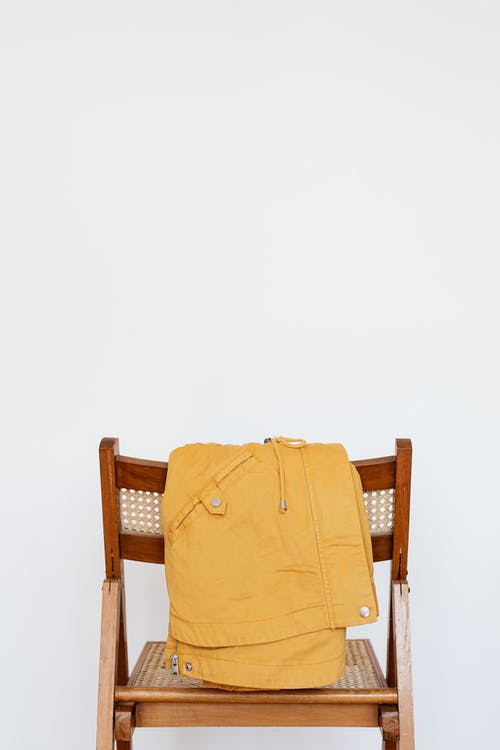
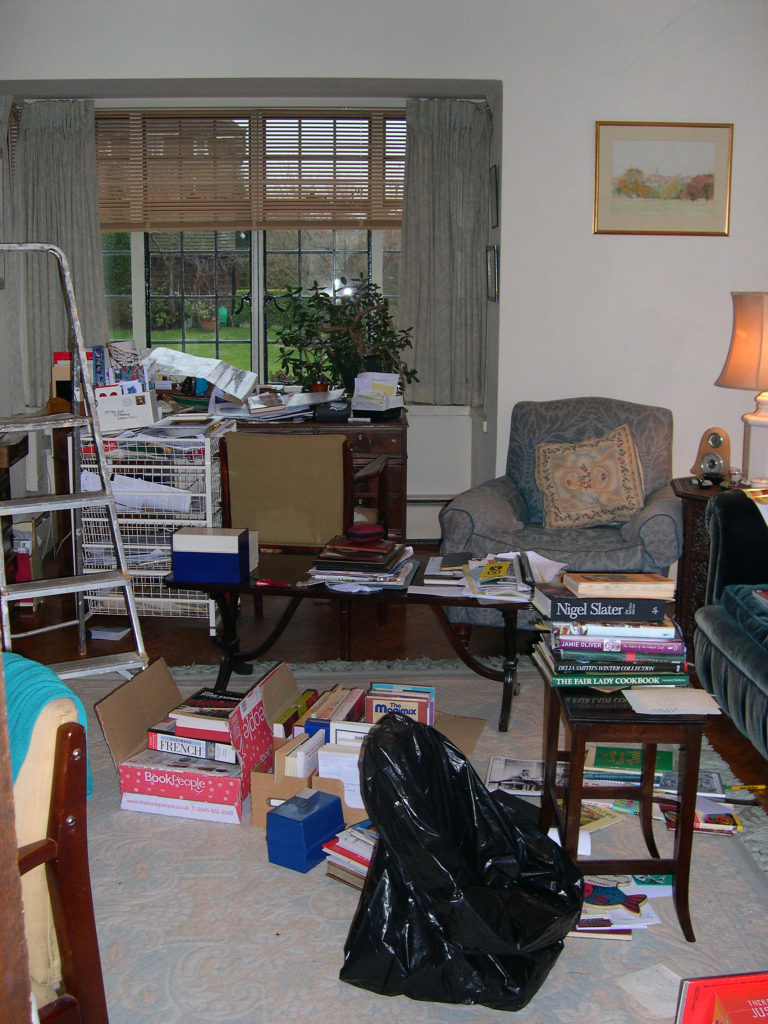

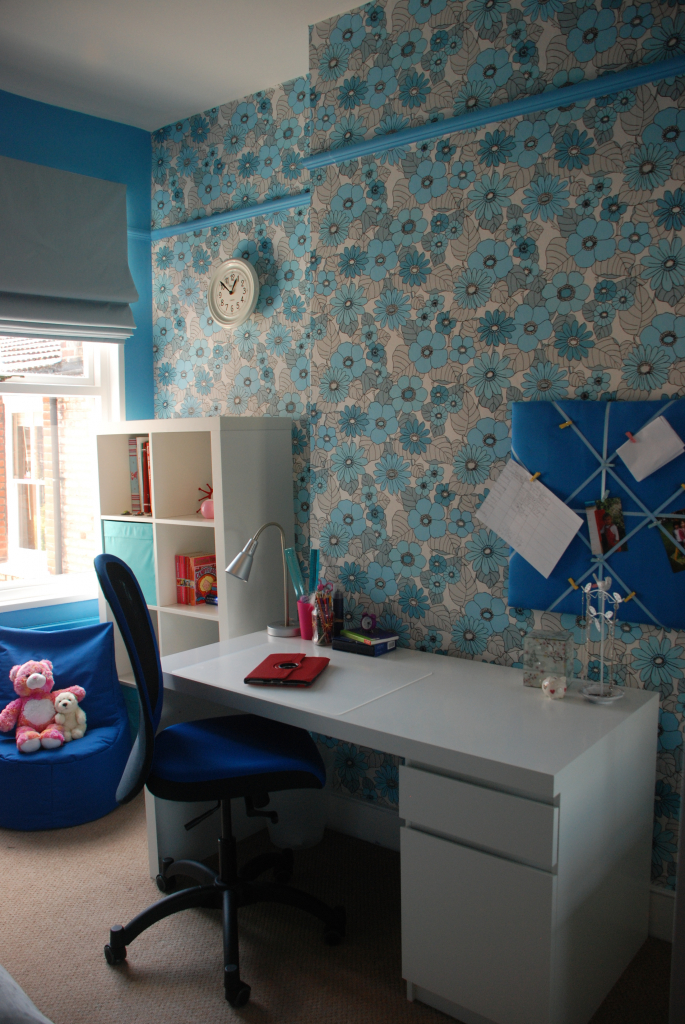
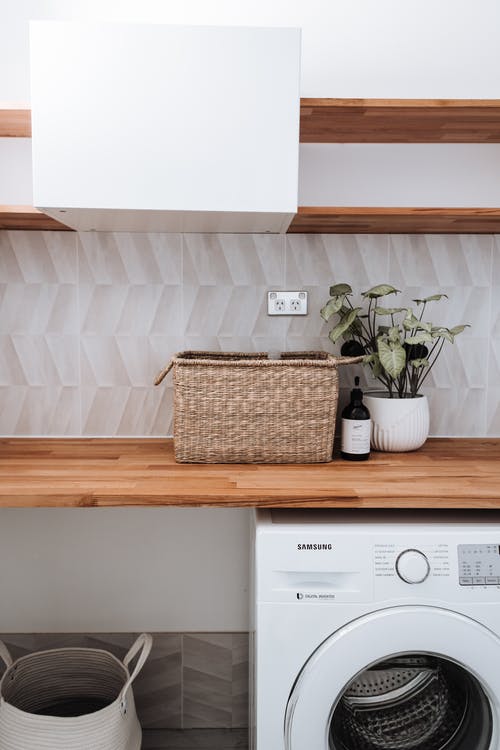


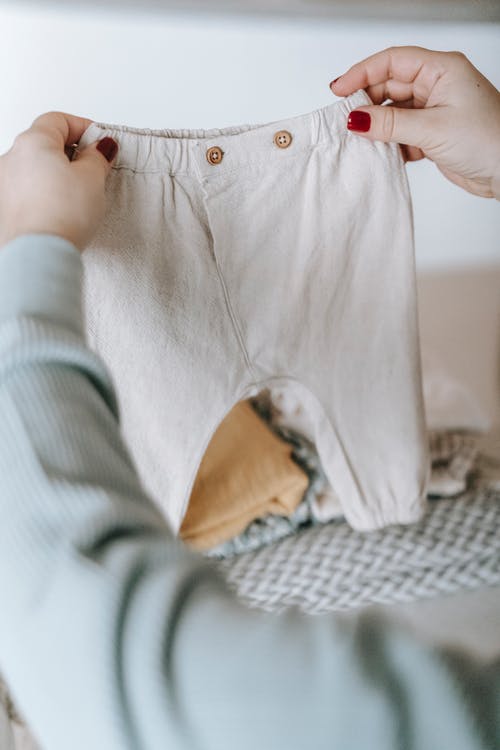

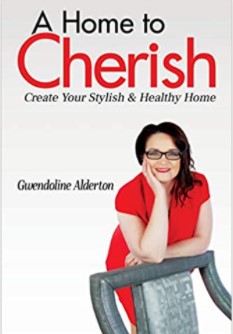

Recent Comments